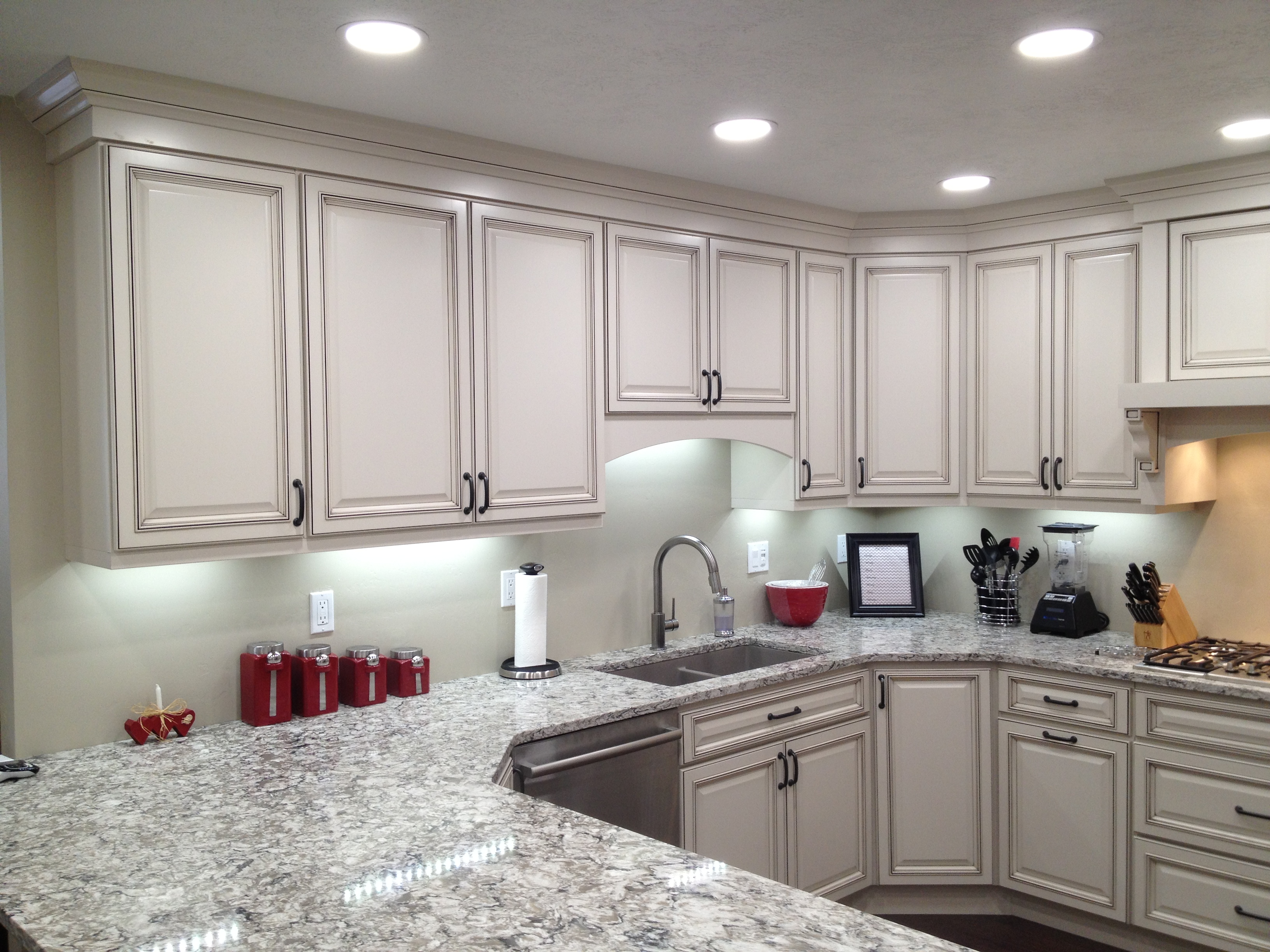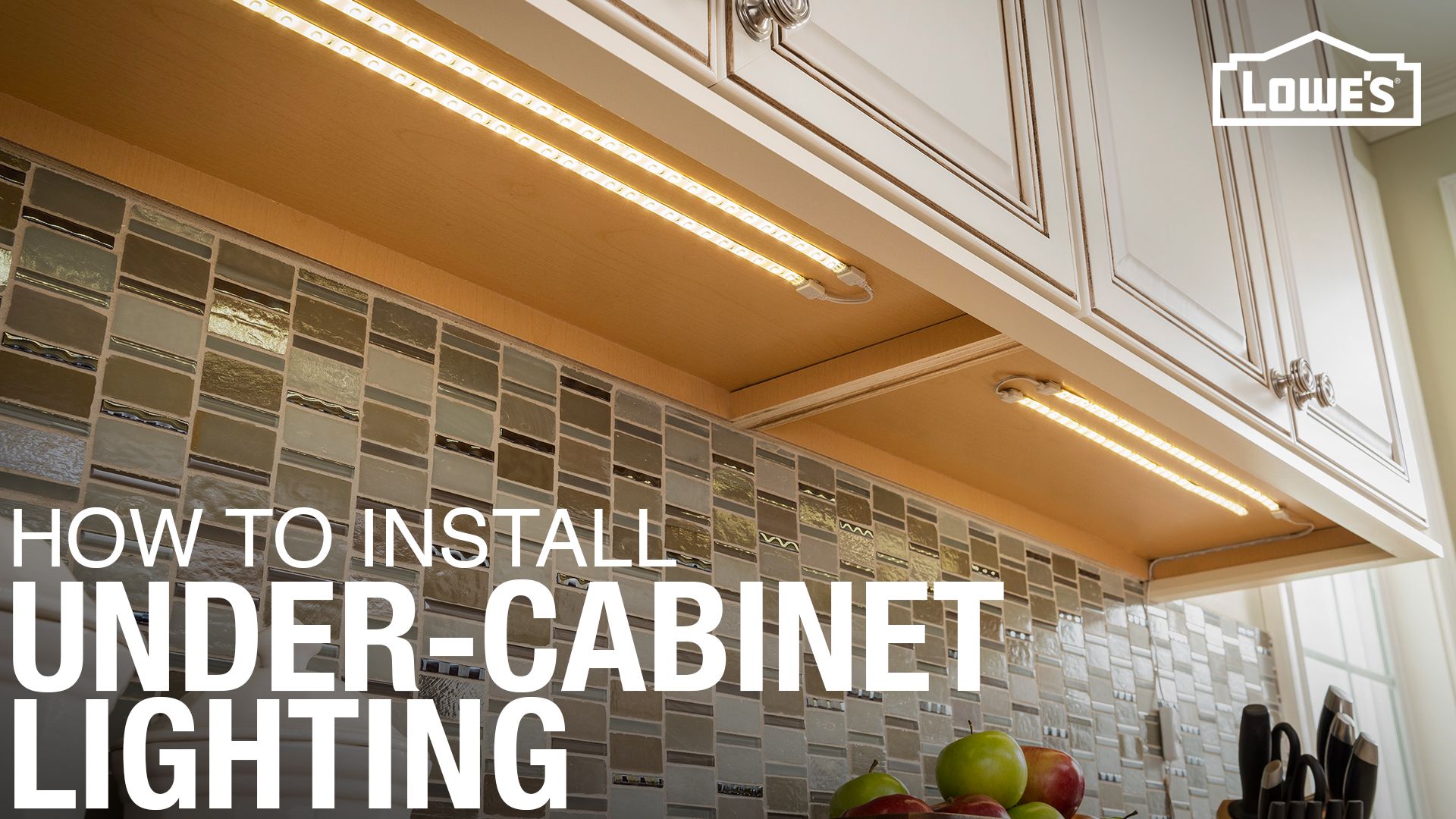Types of Wireless Under Cabinet Lighting: Under Cabinet Lighting Options Wireless

Wireless under cabinet lighting is a great way to add a touch of style and functionality to your kitchen or bathroom. With a variety of options available, you can find the perfect solution for your needs and budget.
LED Strips
LED strips are a popular choice for under cabinet lighting due to their versatility and affordability. They come in a variety of lengths, colours, and brightness levels, allowing you to create a custom look. LED strips are also energy-efficient, consuming less power than traditional incandescent bulbs.
Pros
- Versatility: LED strips can be cut to size and bent to fit any shape, making them ideal for complex under cabinet installations.
- Affordability: LED strips are generally more affordable than other types of under cabinet lighting.
- Energy Efficiency: LED strips consume significantly less power than traditional bulbs, saving you money on your energy bills.
- Brightness: LED strips offer a wide range of brightness levels, allowing you to adjust the lighting to your needs.
Cons
- Installation: Installing LED strips can be tricky, especially for those who are not familiar with electrical wiring.
- Durability: LED strips can be fragile and prone to damage, especially if they are not installed properly.
Examples
- Philips Hue LightStrip Plus: This popular LED strip offers a wide range of colours and brightness levels, and can be controlled via a smartphone app.
- Govee LED Strip Lights: Govee offers a variety of affordable LED strips with different features, such as music sync and colour changing.
Puck Lights, Under cabinet lighting options wireless
Puck lights are small, circular lights that are often used for under cabinet lighting. They are typically brighter than LED strips and offer a more focused beam of light. Puck lights are also easy to install and can be mounted directly to the underside of your cabinets.
Pros
- Brightness: Puck lights provide a bright, focused beam of light, making them ideal for tasks such as food preparation.
- Ease of Installation: Puck lights are easy to install, as they can be mounted directly to the underside of your cabinets.
Cons
- Cost: Puck lights are generally more expensive than LED strips.
- Limited Versatility: Puck lights are not as versatile as LED strips, as they cannot be cut to size or bent to fit complex shapes.
Examples
- Feit Electric Puck Lights: Feit Electric offers a variety of affordable puck lights with different features, such as dimmable options and different colour temperatures.
- Philips Hue White and Color Ambiance Starter Kit: This kit includes two puck lights that can be controlled via a smartphone app and offer a wide range of colours and brightness levels.
Motion-Activated Lights
Motion-activated lights are a great option for those who want to save energy and add a touch of security to their home. These lights are activated by movement and automatically turn off after a set period of time. Motion-activated lights are typically used in areas where you need quick and easy access to light, such as under cabinets or in hallways.
Pros
- Energy Efficiency: Motion-activated lights only turn on when needed, saving you energy and money.
- Security: Motion-activated lights can deter burglars and other unwanted visitors.
- Convenience: Motion-activated lights provide quick and easy access to light without having to fumble for a switch.
Cons
- Cost: Motion-activated lights are generally more expensive than other types of under cabinet lighting.
- Sensitivity: Motion-activated lights can be sensitive to movement, which can sometimes lead to unwanted activation.
Examples
- GE Enbrighten LED Motion Sensing Under Cabinet Light: This light offers a bright, white light and is activated by movement within a 10-foot range.
- Philips Hue Motion Sensor: This motion sensor can be used with any Philips Hue lights to create a motion-activated lighting system.
Installation and Setup of Wireless Under Cabinet Lighting

Installing wireless under cabinet lighting is a relatively straightforward process that can be completed by most DIY enthusiasts. This section will guide you through the steps involved, from choosing the right location to connecting the lights to a power source and wireless control system.
Choosing the Right Location
The first step is to determine the ideal location for your under cabinet lights. Consider the following factors:
- The purpose of the lighting: Are you aiming for task lighting, ambient lighting, or both?
- The size of the area to be illuminated: Ensure the lights are powerful enough to adequately light the entire area.
- The distance between the lights and the power source: Consider the length of the wiring required and ensure it’s feasible.
It’s also crucial to ensure that the chosen location allows for easy access to the power source and the wireless control system.
Mounting the Lights
Once you’ve chosen the location, it’s time to mount the lights. Most wireless under cabinet lights come with adhesive strips or screws for mounting.
- Adhesive strips: These are convenient and require no drilling, making them ideal for renters or those who prefer a non-permanent solution.
- Screws: These provide a more secure mounting option, particularly for heavier lights or those in high-traffic areas.
Ensure that the surface you’re mounting the lights on is clean and dry before applying the adhesive or drilling holes for screws.
Connecting to a Power Source
Wireless under cabinet lights typically come with a power adapter that plugs into a standard wall outlet.
- Plug-in power adapters: These are the most common and convenient option. Simply plug the adapter into a nearby outlet, and the lights will be powered.
- Hardwired connections: Some systems may allow for hardwired connections, which eliminate the need for a power adapter. However, this often requires professional installation.
Ensure that the power adapter is compatible with the lights and that the outlet is accessible.
Connecting to a Wireless Control System
The final step is to connect the lights to a wireless control system. This typically involves pairing the lights with a remote control or a smartphone app.
- Remote controls: These offer a simple and straightforward way to control the lights. Most remotes allow you to turn the lights on and off, adjust brightness, and even set timers.
- Smartphone apps: These offer a wider range of control options, including the ability to create custom lighting schedules, adjust colour temperature, and even integrate with smart home systems.
Follow the instructions provided by the manufacturer to pair the lights with the control system.
Installation Challenges and Solutions
While installing wireless under cabinet lighting is generally straightforward, some challenges may arise:
- Uneven cabinets: If your cabinets are uneven, it may be difficult to mount the lights evenly. Use shims or spacers to level the lights before mounting them.
- Limited power outlets: If you don’t have a convenient outlet near the desired location, you may need to use an extension cord. However, ensure the extension cord is rated for the power requirements of the lights.
If you encounter any difficulties during the installation process, refer to the manufacturer’s instructions or consult a qualified electrician.
Benefits and Applications of Wireless Under Cabinet Lighting

Wireless under cabinet lighting offers a range of benefits, making it a popular choice for enhancing kitchens and other spaces. From improved visibility to aesthetic appeal and enhanced safety, these lights provide practical and decorative advantages.
Improved Visibility and Task Lighting
Wireless under cabinet lighting provides excellent task lighting, making it easier to perform tasks like preparing food, reading recipes, and working on projects. The focused light illuminates the work surface, reducing eye strain and improving accuracy. For example, in a kitchen, these lights can be used to illuminate the countertop, making it easier to chop vegetables, prepare meals, or read recipes. The concentrated illumination eliminates shadows and improves visibility, making tasks more efficient and enjoyable.
Enhanced Kitchen Aesthetics and Mood Lighting
Wireless under cabinet lighting can significantly enhance the overall aesthetics of a kitchen. The soft, warm glow creates a welcoming and inviting atmosphere. The lights can be used to highlight specific features, such as countertops, backsplashes, or cabinet hardware. Additionally, the ability to adjust the brightness and colour temperature allows users to create different moods, from a bright and vibrant atmosphere for entertaining to a soft and relaxing ambience for a cozy evening.
Increased Safety and Security
Wireless under cabinet lighting can improve safety in the kitchen and other spaces. The lights provide a clear view of the work area, reducing the risk of accidents. They can also act as a deterrent to potential intruders, as the lights will illuminate the area if someone approaches. Additionally, some wireless under cabinet lights feature motion sensors, which automatically turn on the lights when movement is detected. This feature provides added security and peace of mind, especially in areas that are often dark or poorly lit.
Applications of Wireless Under Cabinet Lighting
Wireless under cabinet lighting has a wide range of applications, making it a versatile solution for various spaces.
Task Lighting
Wireless under cabinet lighting is ideal for providing focused illumination for specific tasks. For example, in a kitchen, these lights can be used to illuminate the countertop, making it easier to prepare meals, chop vegetables, or read recipes. In a home office, they can be used to illuminate the desk, providing ample light for working on a computer or writing.
Accent Lighting
Wireless under cabinet lighting can be used to highlight specific features in a space, such as countertops, backsplashes, or cabinet hardware. The lights can be used to create a visual focal point and add a touch of elegance to the design. For example, in a kitchen, these lights can be used to accentuate the beauty of a granite countertop or a mosaic backsplash. In a living room, they can be used to highlight a piece of art or a decorative shelf.
Mood Lighting
Wireless under cabinet lighting can be used to create different moods and ambiences in a space. The ability to adjust the brightness and colour temperature allows users to create a variety of atmospheres, from a bright and vibrant atmosphere for entertaining to a soft and relaxing ambience for a cozy evening. For example, in a kitchen, these lights can be used to create a warm and inviting atmosphere for dinner parties. In a bedroom, they can be used to create a calming and relaxing ambience for bedtime.
Think about the possibilities! Under cabinet lighting options wireless offer a world of convenience and style. Imagine a sleek, modern bathroom with a recessed bathroom cabinet with lights that illuminates your space with the perfect ambiance. The same innovative technology that powers those bathroom cabinets can be used to transform your kitchen, your workspace, even your closets! The possibilities are endless, so let’s explore the exciting world of wireless under cabinet lighting together.
Under cabinet lighting options wireless are a fantastic way to add functionality and style to your kitchen. But before you dive into choosing the perfect fixtures, consider the placement of your overhead lighting. You might be asking yourself, how far should can lights be from cabinets ?
The answer depends on your specific needs and the overall design of your kitchen. By thoughtfully planning both your under cabinet and overhead lighting, you can create a truly functional and visually appealing space.